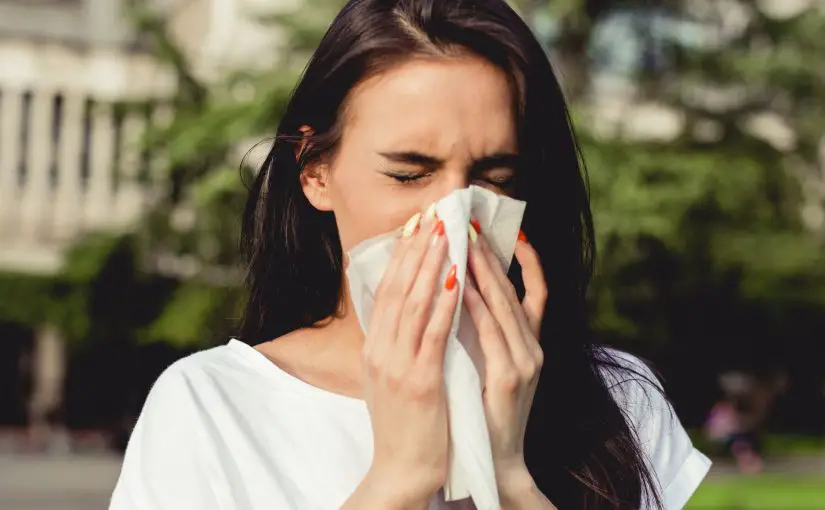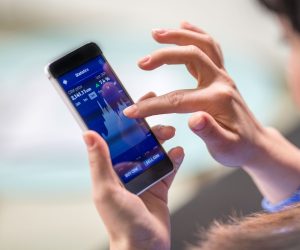Allergies often catch even the healthiest among us off guard. It’s not uncommon to overlook our immediate environment when an allergy attack strikes.
Table of Contents
Is an Allergy to Oxygen Possible?
The simple answer is no; being allergic to oxygen is not possible.
Oxygen is essential for life, comprising a significant component of the air we breathe.
However, the air surrounding us can be laden with allergenic substances that mimic the effects of an oxygen allergy.
The true antagonists in our air include pollen, mold spores, dust mites, pet dander, and various household chemicals. These substances are the genuine instigators of airborne allergic reactions.

Air pollution is a significant global challenge, impacting cities and communities worldwide. Surprisingly, the air within the confines of our homes can often be more contaminated than the outdoor environment.
Indoor air quality is influenced by a myriad of factors such as pets, which can contribute dander and fur; carpets, which trap dust and allergens; household appliances, which can emit harmful gases; insects, which bring in various allergens; smoke from tobacco or cooking, which adds particulate matter to the air; moisture, which encourages mold growth; and a variety of other pollutants including volatile organic compounds (VOCs) from paints, furniture, and cleaning products.
For instance, cities like Beijing, Delhi, and Los Angeles have been notorious for their outdoor air pollution issues, often attributed to industrial activities and vehicle emissions.
However, studies have shown that indoor air in these and other areas can be up to five1 times more polluted due to inadequate ventilation and the presence of indoor pollutants mentioned above.
Such pollution can lead to severe health issues ranging from respiratory conditions like asthma and bronchitis to long-term effects on the heart and brain. In contrast, some indoor air quality problems may simply cause discomfort, such as irritation of the eyes, nose, and throat, headaches, and fatigue.
| Tip Number | Strategy | Description | Benefits |
|---|---|---|---|
| 1 | Ventilation | Improve airflow by opening windows and using trickle ventilators. | Refreshes stale air and reduces indoor pollutants. |
| 2 | Keep the AC Clean | Clean and replace AC filters regularly according to manufacturer’s instructions. | Ensures efficient air purification and circulation. |
| 3 | Regulate Humidity and Maintain Clean Bedding | Maintain humidity levels between 30% and 50% and clean fabrics regularly. | Controls dust mite populations and reduces allergen exposure. |
| 4 | Beeswax Candles | Burn beeswax candles to release negative ions and reduce airborne contaminants. | Neutralizes airborne particles, improving air quality. |
| 5 | Salt Lamps | Use salt lamps to emit negative ions, helping to purify the air. | Contributes to cleaner air and may alleviate asthma symptoms. |
| 6 | Activated Charcoal | Utilize activated charcoal in filters to absorb toxins and odors from the air. | Effectively removes a wide range of air pollutants. |
| 7 | Houseplants | Keep indoor plants to enhance oxygen levels and filter out pollutants. | Improves air quality naturally and adds aesthetic appeal. |
| 8 | Air Purifiers | Invest in air purifiers with HEPA and carbon filters to reduce up to 90% of indoor pollutants. | Provides significant reduction in indoor air pollutants and smart monitoring. |
1.Ventilation
The cornerstone of pristine air quality lies in effective ventilation. Circulating air throughout your dwelling dispels stale air, paving the way for the invigoration of fresh outdoor air. A simple act of opening windows and doors can dramatically transform the ambiance of your home by introducing fresh air.
However, it’s paramount to be cautious, particularly for residents of urban areas where external air might be laden with pollutants due to heavy traffic and industrial activities. Timing is crucial; opt for moments of reduced traffic, like early mornings or late evenings, to minimize the intake of outdoor pollutants.
For a more sophisticated approach, consider installing trickle ventilators. These devices not only facilitate the entry of outdoor air but also purify it by filtering out contaminants, effectively serving as both air purifiers and ventilators. They are particularly beneficial in areas like kitchens, where cooking processes can introduce pollutants, and bedrooms, where clean air is essential for a restful sleep.
Trickle ventilators can be seamlessly integrated into existing windows or doors, or installed using an independent frame compatible with various structures, ensuring a continuous flow of clean air into your home.
2. Keep the AC Clean
Air conditioners can significantly enhance the quality of your indoor air by dehumidifying and circulating fresh air. They are equipped with filters designed to purify the air by trapping allergens and pollutants.
However, to ensure their effectiveness, it’s crucial to regularly maintain these filters. This involves cleaning and, when necessary, replacing them to keep the air conditioner functioning optimally. For specific maintenance guidelines, including the frequency of cleaning or replacement, refer to the instructions provided by the manufacturer of your air conditioning unit.

3. Regulate Humidity and Maintain Clean Bedding
High humidity levels create an ideal breeding ground for dust mites, which are common culprits of indoor air pollution. These tiny pests thrive in moist environments and can exacerbate allergies by irritating the respiratory tract. To curb their proliferation, it’s essential to maintain indoor humidity levels between 30% and 50%. Using a dehumidifier can effectively reduce excessive moisture in the air, making your home less hospitable to dust mites.
In addition to controlling humidity, regular cleaning of household fabrics is crucial. Dust mites often reside in bedding, curtains, and upholstered furniture. Washing these items frequently with hypoallergenic laundry detergent can significantly reduce dust mite populations. For pet owners, limiting pets’ access to bedrooms and living areas can also help minimize the accumulation of pet dander and hair, further improving indoor air quality.
4. Beeswax Candles Make Great Air Purifiers
Beeswax candles are great for keeping the air clean and fresh.
As a beeswax candle burns, it releases negative ions.
Dust, dirt, pollen, pollutants, and other kinds of aerial junk have a positive charge.
When the negative ions from beeswax touch those positively-charged particles, it causes the particles to disperse or be sucked into the candle.
That is basically how air purifiers work.
Beeswax candles are completely 100% natural and, as well as eliminating contaminants and bad smells from your home, they have their own great smell and add a real ambiance to the home.
5. Salt Lamps Help with Asthma
If you don’t like the sound of burning candles, then consider picking up a salt lamp. Salt lamps are created by taking Himalayan salt and adding a light source.
Like beeswax candles, they release negative ions when they are lit.
The negative ions from salt lamps fight against the positively charged particles that make up the contaminants causing allergies.
Asthma sufferers have also reported that they got relief from their symptoms when using salt lamps.
6. Activated Charcoal
Activated charcoal has been used to purify air safely and effectively for decades. Activated charcoal was used with gas masks in World War 1. It is still used to filter and recycle air in submarines as well as reduce car emissions.
When it comes to your home, activated charcoal is a fast and effective method for eliminating contaminants.
Activated charcoal can be found combined in most HEPA filters too. There’s no reason to not cut out the middle man and just get the charcoal itself, which is more than capable of getting the job done on its own.
7. Houseplants
 Plants and trees do wonders for outdoor air quality, and many indoor plants can have the same effect for your home.
Plants and trees do wonders for outdoor air quality, and many indoor plants can have the same effect for your home.
They help to get rid of toxins from the air, increase oxygen levels, and they also look and smell great.
Not any old houseplant will do though. Try to get your green thumbs on some ivy, bamboo, and dracaenas.
There are an endless array of benefits to keeping the air in your home clean. Alleviate allergy and asthma symptoms, breathe easier, and just improve your overall quality of life with these tips on improving indoor air quality.
| Device Type | Features | Purification Technology | User Benefits |
|---|---|---|---|
| Smart Air Purifiers | Wi-Fi connectivity, app control, pollution sensors | HEPA, activated carbon, IoT sensors | Remote monitoring and control, real-time air quality updates |
| HEPA Air Purifiers | HEPA filtration technology | HEPA filters | High efficiency in removing allergens and small particles |
| Activated Charcoal Filters | Activated charcoal absorption | Charcoal absorption | Absorbs odors and chemicals, purifies air |
| Trickle Ventilators | Continuous air exchange with outdoor air, built-in filters | Passive filtration | Improves indoor air quality with minimal energy use |
| Dehumidifiers | Moisture removal, humidity control | Moisture control | Reduces dust mites and mold by controlling humidity |
8. Air purifiers
An air purifying machine can do wonders to reduce the contaminants that are causing the oxygen to seem allergic.
Most air purifiers these days are capable of reducing indoor air pollution up to the 90%.
The most popular air purifiers on the market use HEPA and carbon filters to filter out everything
from dust mites and dander to construction adhesive fumes and cooking odors.
 Smart air purifiers.
Smart air purifiers.
Smart air purifiers have taking over the market these days, giving the consumer a full range of capabilities to monitor and control their air quality with their phone.
What a great way to know that when you get home, your air is going to be the quality you need to get a good night’s rest or be able to breathe when you are suffering from sinus issues.
These air cleaning machines use sensors to measure the pollution in the air then activate the air purifier to clean the air and bring it back to a safe level.
Once they have done their job they shut off to keep the air cleaner from running all the time and save on the life of the filters and the machine itself.
In Summary
It’s not possible to be allergic to oxygen itself, as it’s essential for our well-being. However, the air we breathe can become laden with various contaminants, making it feel as though we’re reacting negatively to oxygen. To combat this, several strategies can be employed to minimize airborne allergens and pollutants in our environment.
These include introducing houseplants that can purify the air, using beeswax candles that produce fewer pollutants, maintaining our homes to prevent the buildup of dust and mold, and utilizing air purifiers to filter out unwanted particles. Together, these measures can significantly improve indoor air quality and our overall health.
Here’s to your health.


 Smart air purifiers.
Smart air purifiers.